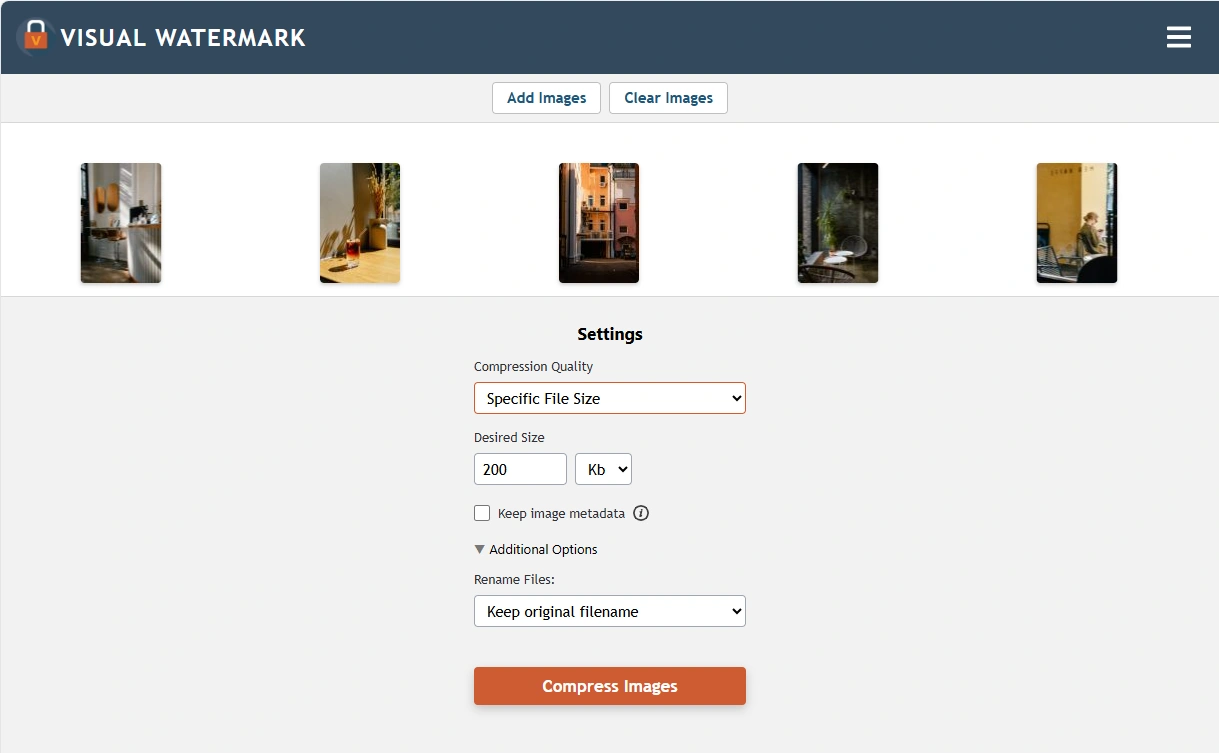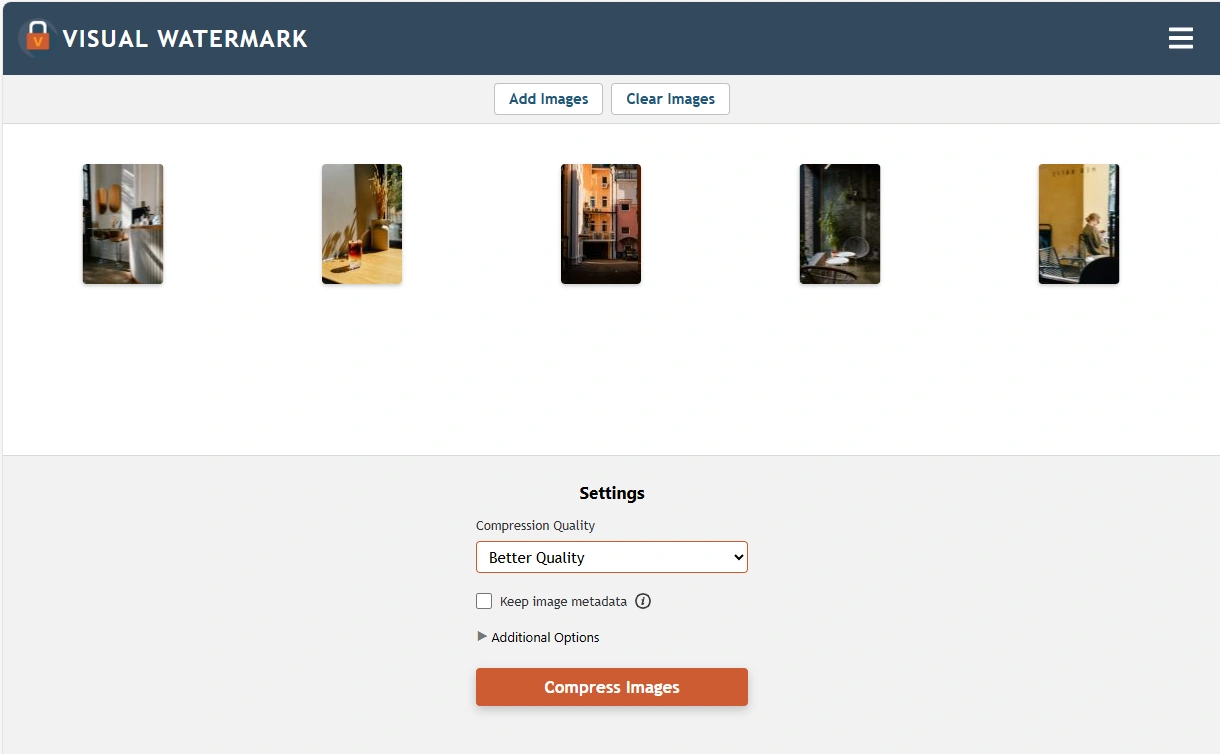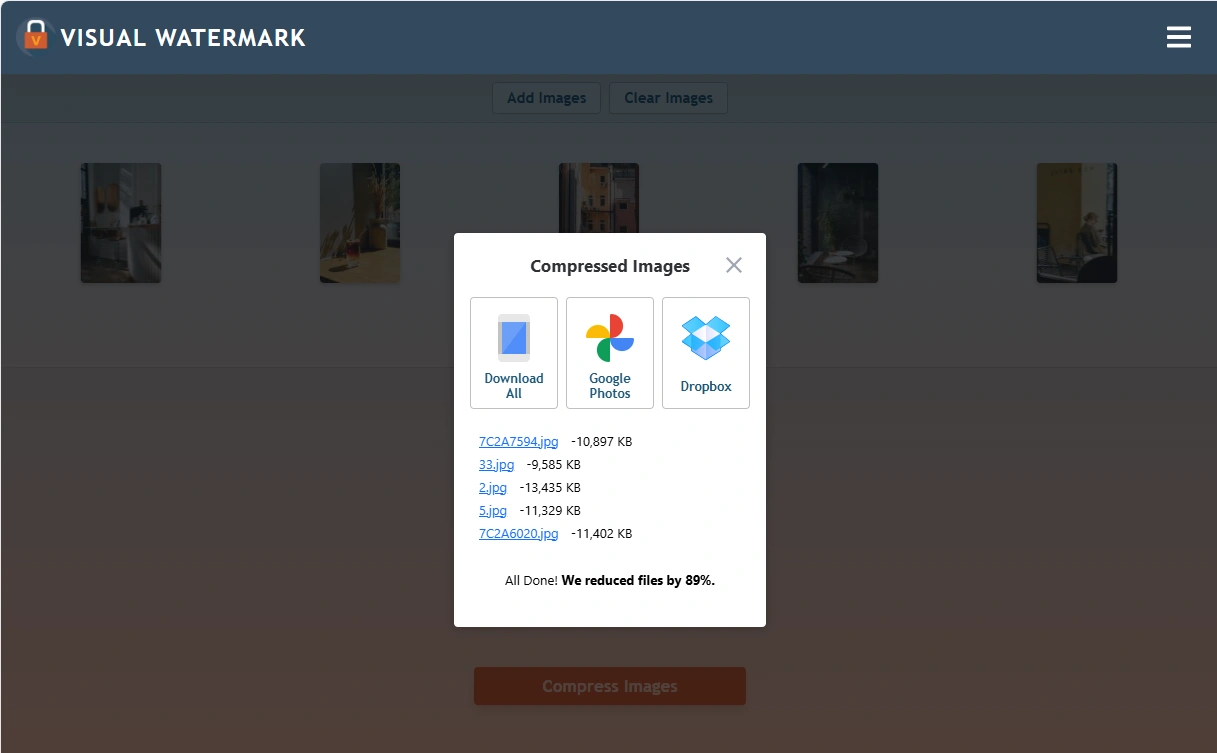Custom Photo Compression For Greater Control
With the previous two options, you won’t know the final file size of your images until the app finishes compressing them. But with this option, you gain more flexibility and control.
Go for the "Specific File Size" option if:
- You need to meet strict upload limits on websites, forms, or online platforms.
- You're submitting documents for official use that require images under a certain size - such as 200 KB.
- You're archiving or backing up images and need precise control over storage space.
This option can provide maximum compression, if needed - up to 99%. It's important to note that such a significant reduction in file size, from 16.2 MB to 200 KB, will inevitably lead to the change of the image's pixel dimensions.
It also offers flexibility and room for experimentation. You can compress the same batch of images using different target sizes to find the best balance.
Keep in mind: file size and image quality are closely linked. The smaller the file size, the lower the quality. So, try different options and files sizes, then choose the one that delivers the results you want.

This is a magnificent application, I have been using it for years and they are always improving and looking for ways to make your work easier. I recommend it to everyone.
Jonathan, United States

 Watermark Online
Watermark Online Crop Images Online
Crop Images Online Compress Photos
Compress Photos Resize Image Online
Resize Image Online Add Text To Photo
Add Text To Photo Add Logo To Photo
Add Logo To Photo Add Logo To Video
Add Logo To Video Convert to JPG
Convert to JPG Convert to PNG
Convert to PNG Blur Part of an ImageBuySupport:Contact Support TeamRestore Activation KeyBlog:All PostsBest Apps To Add Text To PhotosHow To Watermark Photos On InstagramHow To Watermark Photos On AndroidHow To Add a Watermark in WordHow to Add a Watermark in ExcelWhat Is a Watermark?What Is a Watermark on a Video?How to Make a Watermark in PhotoshopHow to Copyright a PhotoFree Download
Blur Part of an ImageBuySupport:Contact Support TeamRestore Activation KeyBlog:All PostsBest Apps To Add Text To PhotosHow To Watermark Photos On InstagramHow To Watermark Photos On AndroidHow To Add a Watermark in WordHow to Add a Watermark in ExcelWhat Is a Watermark?What Is a Watermark on a Video?How to Make a Watermark in PhotoshopHow to Copyright a PhotoFree Download Visual Watermark
Visual Watermark







